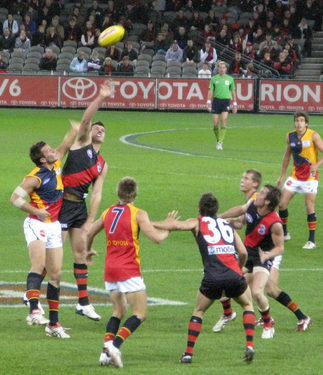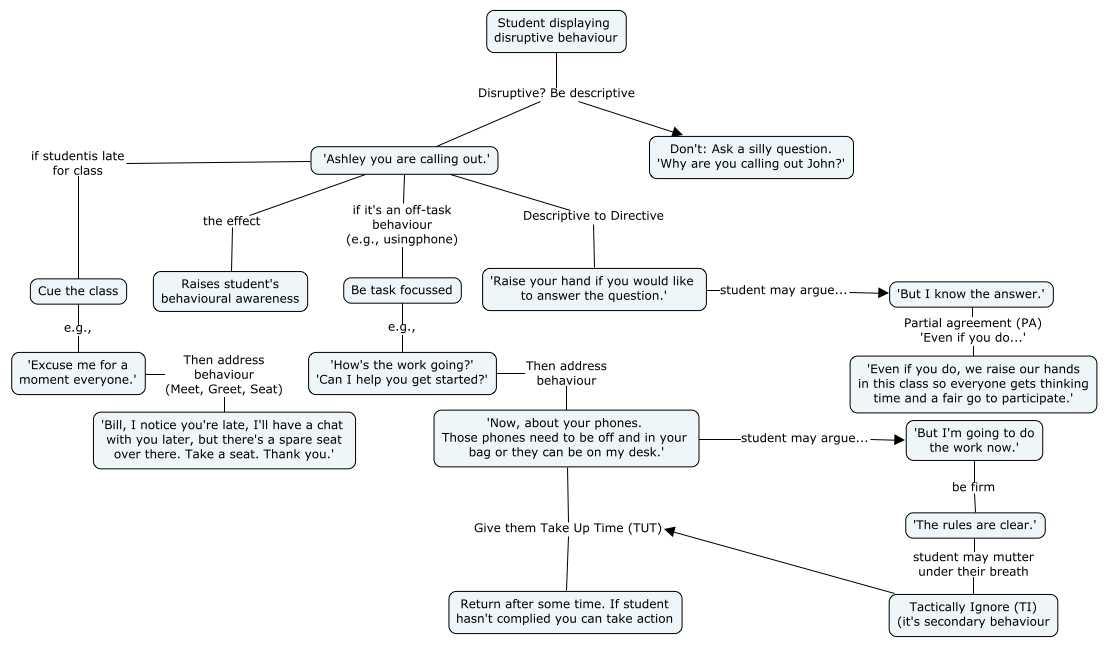Listen to Ollie’s in-depth podcast interview with Bill Rogers here.
‘What’s your favourite football team?’
In my teacher training prior to my first placement I was told that the students would google me, but I wasn’t told how much they’d drill me in person, even to the point of asking ‘What’s your favourite football team?’ when I’m trying to explain how to do some maths on the board!
 Behaviour management is definitely the element of teaching that I found most challenging on my last placement, and it’s an element that I’ve resolved to focus on particularly this coming placement. In this vein, myself and the rest of my Masters of Teaching cohort were lucky enough to have Bill Rogers, a well recognised authority on behaviour management (or ‘behaviour leadership’ as he often refers to it) speak to us at the start of our second semester.
Behaviour management is definitely the element of teaching that I found most challenging on my last placement, and it’s an element that I’ve resolved to focus on particularly this coming placement. In this vein, myself and the rest of my Masters of Teaching cohort were lucky enough to have Bill Rogers, a well recognised authority on behaviour management (or ‘behaviour leadership’ as he often refers to it) speak to us at the start of our second semester.
Bill spoke for an hour and a half. It was intense. We were furnished with example after example of how to effectively manage a class, all delivered in a sort of performance style dialogue where Bill impersonated both teacher and student. Key ideas that I took away are the following four.
- Be Descriptive and Directive
- Partial Agreement: ‘Even if…’
- Take up Time
- Tactically Ignore
Here’s a mindmap tying these key ideas together. I flesh them out further below…
(click to enlarge)
Be Descriptive and Directive
You ask a question to the class, hoping that they’ll all have thinking time to mull over the concept, then one kid blurts out the answer. What do you do?
Bill emphasised numerous times the futility of teachers asking a questions in any behaviour leadership situation. Futile questions could be ‘Why are you calling out?’ or ‘Why can’t you just be quiet?’. He emphasised being descriptive with a short sentence such as ‘Ashley, you are calling out.’ This raises the student’s behavioural awareness. You can then go on to be directive, ‘We raise our hand if we’d like to answer a question.’
This approach raises a student’s behavioural awareness but also makes your expectations clear and provides an opportunity to reinforce them.
Partial Agreement (PA): ‘Even if…’
In my last placement, as much as I hate to admit it, there were several times when I found myself being outclassed in a behavioural debate with a student.
‘That’s it Fred, I warned you and you’ve kept on disrupting Tom. Come to the front of the class so that you can work without distraction for 15 minutes.’
‘But I was helping Tom.’
 ‘Oh, um, well, I said it was silent work time, so you still need to sit up the front. If you work well for 15 minutes then you can move back to your seat.’
‘Oh, um, well, I said it was silent work time, so you still need to sit up the front. If you work well for 15 minutes then you can move back to your seat.’
‘But Tom couldn’t do the question…’
…and it goes on, my authority and conviction withering away with each additional line that Fred spurts. Let’s face it, he’s honed his negotiation skills over years of teacher-student debate, I’m just the new kid on the block!
To nip such an interchange in the bud, Bill suggests partial aggreement (PA) through a sentence starting with ‘Even if…’.
An ‘Even if…’ (PA) response could look as follows.
‘But I was helping Tom.’
‘Even if you were helping Tom, now is silent work time and we agreed that from time to time we need to work independently. If anyone has a question during silent work time they can raise their hand. Come and sit up the front and after working silently for 15 minutes you can move back to your seat. Thank you.’
(note the use of ‘Thank you’ rather than ‘Please’. This signals compliance. I mentioned this in a previous post based on a behaviour management PD I attended run by Glen Pearsall)
Take up Time (TuT)
To me, take up time is probably the most powerful concept that Bill explicated in his presentation. If we continue on from the previous scenario we can imagine a progresstion into a standoff between teacher and student, with teacher wasting their valuable time standing in front of the student, arms crossed, and saying something like ‘I’m waiting for you to move.’ until the student eventually moves, or teacher has to up the anti with a threat of further action. These ego-based standoffs are the type that cause a scene, waste time, are stressful, and really degrade student teacher relationships. Effectively using TuT simply means a teacher clearly stating the request (be descriptive and directive), then leaving the student to comply. The teacher will then come back in a couple of minutes to check that compliance has indeed occurred and, if not, enforce consequences.
Tactically Ignore
Tactically ignoring could well be the final necessary ingredient to effectively leading the above scenario. Perhaps you’ve already described to Fred what his behaviour is, directed him to appropriate behaviour, and partially agreed with your ‘even if…’ statement. You’ve been doing pretty well but you’re feeling a little bit stressed out. Then, just as you begin to walk away to give Fred some TuT, you hear him mutter something under his breath something to the tune of ‘Move to the front of the class my ass!’
The temptation could be to pivot and unleash upon Fred a tirade about class rules, respect, how it’s supposed to be silent time, how this is the fifth time this week that you’ve reprimanded him…etc. But here Bill would introduce to us to an important distinction, that of the difference between primary and secondary behaviour.
Bill suggests we ignore secondary behaviour (muttering under breath, rolling eyes, indulgent sighs), and instead focus on primary behaviour such whether the student is doing work, on their phone, calling out, or actively directing inappropriate language or actions towards yourself or another student.
We need to address primary behaviour and ignore secondary behaviour.
 This is probably the Bill-based-belief that many teachers find it hardest to embody. From our own school days we are used to getting pulled up for these such transgressions ourselves, so it seems only natural to try to clamp down on ‘disrespectful’ behaviour in our own classrooms. It has helped me to consider the fact that, just as it’s hard for us to implement these new behaviour leadership techniques (as we are trying to overwrite our natural impulses much of the time), so is it difficult for our teenage students to overcome their conditioned response of an eye roll or huff and puff. These behaviour leadership techniques could be thought of as similar to a martial art, something that we need to practice the fundamentals of over and over again so as to ensure that the above techniques become reactions that are embodied and ingrained to the point of automaticity (a process that Josh Waitzkin writes inspiringly about).
This is probably the Bill-based-belief that many teachers find it hardest to embody. From our own school days we are used to getting pulled up for these such transgressions ourselves, so it seems only natural to try to clamp down on ‘disrespectful’ behaviour in our own classrooms. It has helped me to consider the fact that, just as it’s hard for us to implement these new behaviour leadership techniques (as we are trying to overwrite our natural impulses much of the time), so is it difficult for our teenage students to overcome their conditioned response of an eye roll or huff and puff. These behaviour leadership techniques could be thought of as similar to a martial art, something that we need to practice the fundamentals of over and over again so as to ensure that the above techniques become reactions that are embodied and ingrained to the point of automaticity (a process that Josh Waitzkin writes inspiringly about).
Conclusions
I always find it fascinating to link the things I’m learning with respect to pedagogy to my reading and explorations into other fields. Whilst compiling this post it struck me that one of the concepts above, TUT, relates to a point I talked about in another article on the Psychology of Social Change (see 20 minutes and 50 seconds in the video). In that presentation I outlined how, in a negotiation scenario where you are not in the position of power (perhaps you’re negotiating with an employer), it’s often helpful not to push for a definitive outcome there and then, but instead to leave the other party with TUT to consider your decision.
I wonder how Bill’s techniques could be applied to outside of classroom contexts?
Listen to my in-depth podcast interview with Bill Rogers here.
PS: I support the Bombers!
